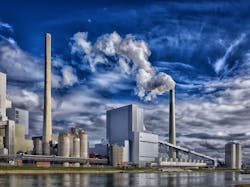So Refined!
The role of MBR technology in oil refining
Aging infrastructure, water scarcity, variable crude slates and more stringent water quality requirements for wastewater effluent are ongoing challenges for thirsty oil and gas processes. We caught up with Stephen Katz, market development manager for water reuse with SUEZ Water Technologies & Solutions, to discuss the role of membrane bioreactor (MBR) technology in addressing these challenges.
INDUSTRIAL WATERWORLD: What kinds of water-related challenges are you seeing in the refinery market?
STEPHEN KATZ: Refiners are facing a number of challenges. Their crude slate has changed from what it used to be. Buyers have access to many additional options so we’re seeing tight oils, we’re seeing heavy oils from Canada come into their mix and get blended. This is changing the operations within the refinery units, especially the desalter, impacting the quality of the wastewater that is produced and sent for treatment. As a result, refiners are now being forced to develop more robust wastewater treatment solutions within the facilities.
The other thing that they’re facing in certain regions is water scarcity, driving a need to lower the water footprint and bring some of that water back into the facility. Discharge requirements are another challenge. Many refineries are situated on impaired waterways and they’re facing tighter discharge regulations for biological oxygen demand (BOD), chemical oxygen demand (COD), metals, nutrients, and other contaminants.
And finally, we are not building a lot of new refineries and the treatment processes have been in place for many years. Therefore, the infrastructure is old and is starting to reach the end of its life or need refurbishment to meet the facility demands. When you put all that together, you end up trying to solve some problems that are fairly layered.
SK: MBR technology enables refiners to recycle the water and meet a lot of these discharge requirements. At the core of the technology is a membrane, which acts as barrier that ensures the quality of water that you need. With the challenges refiners face, we’ve seen an increase in application there.
IWW: Can you share any examples that illustrate how MBR technology has benefited a refiner?
SK: Yes. I’d like to share two interesting examples in North America. One of them is the Marathon refinery in Detroit, Mich. There, they had an effluent discharge issue. They installed an MBR in 2015, so it’s been in operation for some time and meeting their new discharge requirements. Beyond just discharge, the facility wanted to future-proof for reuse. They had goals at the time for reuse but they didn’t implement them immediately. So, they wanted to put in this technology as a first step to set them up to be able to reuse water in the future.
Another example is in Canada. In Regina, Saskatchewan, the Co-op Refinery Complex has implemented a recycled water system. They faced an interesting challenge because, like many refiners, they wanted to expand their refining capacity. Bigger crude units produce more product. In Regina, however, there are competing industries that need water, and there’s also the city itself that needs water. With limited freshwater resources, the complex was going to struggle to draw more water for its facility to refine additional crude, so they put in a recycled water system.
They implemented new pretreatment — a dissolved gas floatation system — followed by an MBR, and then followed by an advanced water treatment system. Now they are going to start recycling 100 percent of the wastewater they collect back into the facility and use it in their cooling towers, boilers, and other process applications.
IWW: Where do you see MBR technology headed?
SK: MBR is fairly mature technology today; it’s been proven over many years. MBRs in refineries aren’t exactly new, but some of these examples in the U.S. are giving comfort to local refiners. And it’s been applied in Italy and Russia and other parts of the world as well. Some of the interesting things to watch: as regulation gets tighter, there are some tweaks that can be made to the process, carbon-based products can be added to remove recalcitrant COD to get to lower and lower levels. I think we’ll see that over time, as well as improvements in the technology itself, in the cost effectiveness and the energy footprint. Those are coming down the pike and pushing the cost effectiveness of these types of solutions to a lower lifecycle cost versus conventional treatment. I think that’s where a lot of the innovation is happening. IWW

